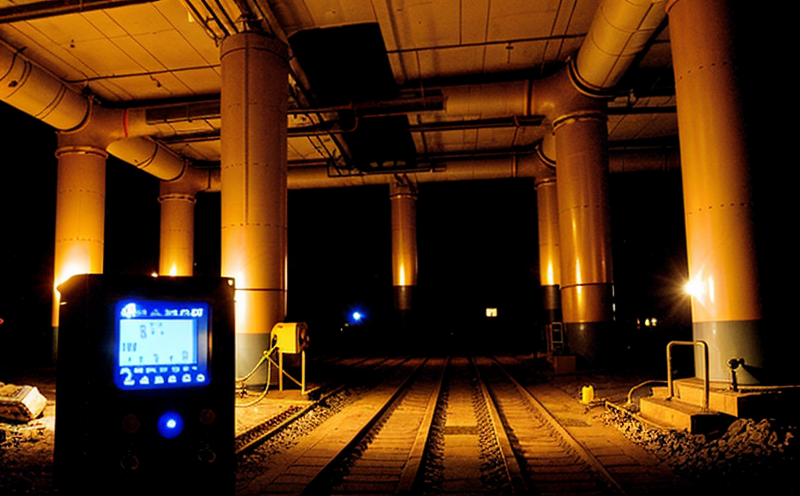DIN 25482 Radiation Protection Monitoring in Mining Testing
The DIN 25482 standard is an essential framework for radiation protection monitoring within mining environments. This standard ensures the safe operation of mines by providing methodologies and guidelines to control ionizing radiations that may pose health risks to workers, equipment, and the environment. The primary objective of this service is to comply with international best practices in radiation safety while fostering a secure working atmosphere.
Mining operations can encounter various sources of ionizing radiation, including naturally occurring radioactive materials (NORMs) such as uranium, thorium, and potassium-40. These materials are common within rock formations and may concentrate at higher levels during mining activities. Additionally, industrial processes like milling and smelting further increase the concentration of these radionuclides in the workplace atmosphere.
DIN 25482 focuses on three main aspects: monitoring, control measures, and personnel protection. Monitoring involves continuous measurement of radiation levels to identify potential risks early. Control measures encompass engineering solutions such as ventilation systems, physical barriers, and material handling procedures. Personnel protection includes personal protective equipment (PPE) like dosimeters worn by workers.
The standard mandates the use of specific instruments for monitoring ionizing radiation in mining environments. Dosimetry devices, scintillation detectors, and proportional counters are commonly employed to measure radiation levels accurately. These tools must be calibrated regularly according to ISO 17025 standards to ensure reliable data. Calibration ensures that measurements are consistent with international units, allowing for effective comparison across different sites.
Compliance with DIN 25482 also requires regular audits and reviews of monitoring protocols. This ensures that all aspects of radiation safety are continuously assessed and improved. The standard emphasizes the importance of training personnel in radiation protection principles and practices. Regular refresher courses and drills help maintain a high level of awareness among workers.
The service provided by our laboratory adheres strictly to DIN 25482 guidelines, ensuring that all aspects of monitoring are carried out precisely as specified. This includes not only the technical aspects but also the administrative processes necessary for maintaining compliance with regulatory requirements. Our team of experts ensures that every step of the process—from instrument calibration to data analysis—is conducted with utmost accuracy and precision.
The implementation of DIN 25482 has significant benefits beyond mere compliance. By strictly adhering to this standard, mining companies can significantly reduce the risk of radiation exposure incidents. This not only protects employees but also enhances operational efficiency by minimizing downtime due to safety concerns. Furthermore, adherence to international standards like DIN 25482 can enhance a company’s reputation and attract investment from reputable sources.
In conclusion, implementing DIN 25482 in mining operations is crucial for maintaining radiation safety. By following this standard, companies ensure that all aspects of radiation protection are addressed comprehensively. This not only protects workers but also contributes to the overall safety and sustainability of mining activities.
Applied Standards
The DIN 25482 standard is closely aligned with other international standards such as ISO 17025, which governs the competence of testing and calibration laboratories. This alignment ensures that all services provided are conducted in a manner consistent with global best practices.
DIN 25482 specifically addresses the measurement of ionizing radiation levels within mining environments. It provides detailed procedures for setting up monitoring systems, performing regular checks, and interpreting results. The standard also emphasizes the importance of continuous improvement through ongoing audits and reviews of existing protocols.
Compliance with DIN 25482 is mandatory for all mining operations in Germany. However, its principles are widely applicable globally due to their focus on safety and effectiveness rather than country-specific regulations. This makes it a valuable reference for any organization involved in mining or related industries worldwide.
International Acceptance and Recognition
DIN 25482 enjoys widespread acceptance across Europe, particularly within the German-speaking countries where it originated. However, its principles are increasingly recognized internationally as a benchmark for radiation protection in mining environments. This recognition is due to its robustness and adaptability to different operational contexts.
Many organizations around the world have adopted DIN 25482 as part of their own safety protocols. By doing so, they ensure that their practices align with recognized international standards, thereby enhancing credibility and trustworthiness in the eyes of stakeholders.
The standard's broad applicability is further enhanced by its flexibility. While it provides specific guidelines for measuring radiation levels in mines, it also allows for customization based on local conditions and specific operational needs. This adaptability ensures that DIN 25482 remains relevant and effective even as mining technologies evolve.
Competitive Advantage and Market Impact
Adhering to DIN 25482 offers several competitive advantages for mining companies. Firstly, it demonstrates a commitment to safety and environmental responsibility, which is increasingly important in today’s regulatory landscape. Secondly, compliance with this standard can lead to reduced insurance premiums as the risk profile of the company improves.
In addition, adhering to international standards like DIN 25482 enhances market reputation and can attract investment from reputable sources. Potential investors are more likely to view a company that follows recognized best practices favorably. This can translate into better business opportunities and increased profitability over time.
Furthermore, compliance with DIN 25482 helps maintain operational continuity by minimizing the risk of radiation exposure incidents. Downtime due to safety concerns is significantly reduced, leading to higher productivity levels and cost savings in the long run. This stability contributes positively to a company's overall performance metrics.





